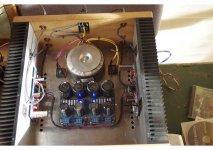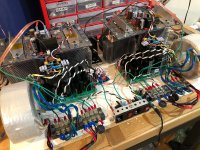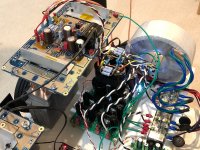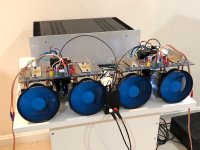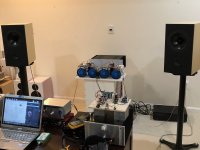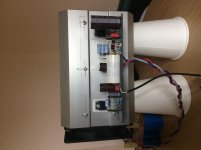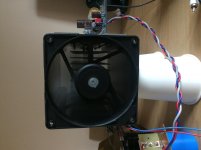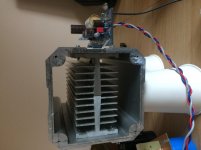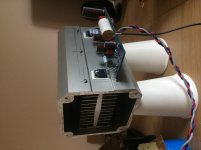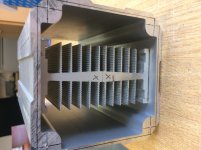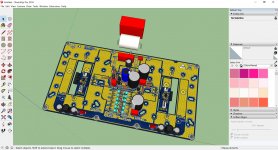A little summary
The optimal resistor values according to Hugh for the Alpha20 8R:
source sensor ccs-fb
0.33 0.12 680 : 1.95A version
0.44 0.12 510 : 1.46A version
Hello Danny,
Thanks for summarising, very helpful.
May I amend your statement to:
Code:
R131 | R132 | R128 |
source | sensor | ccs-fb | bias
-------|--------|--------|--------------
0.33 | 0.12 | 680 | 1.95A version
0.44 | 0.12 | 510 | 1.46A versionI think this will make live easier for followers later on.
Please correct me when the designations are wrong.
Happy listening
Bert
Another Hybrid Aleph Lives!!!
Ended up swapping out the boards from my F6.
The amp has been up and running for a couple of hours with no issues on test speakers will swap over to the Tannoy 385 for a listen later this evening.
Many Thank's X , Hugh and JPS.
Steve.
Ended up swapping out the boards from my F6.
The amp has been up and running for a couple of hours with no issues on test speakers will swap over to the Tannoy 385 for a listen later this evening.
Many Thank's X , Hugh and JPS.
Steve.
Attachments
Congrats wtl 🙂
Btw, original Alpha20 with higher bias (1.95A) is stable to 4ohms? Any idea to bias even higher, since my sinks are huge? How much power it delivers to 4ohm?
Btw, original Alpha20 with higher bias (1.95A) is stable to 4ohms? Any idea to bias even higher, since my sinks are huge? How much power it delivers to 4ohm?
ALPHA BB in Stereo
Well my hands and fingers are sore and calloused from what feels like prepping and making about 200 crimped wire connectors with 16awg wire in building the stereo ALPHA BB. I redid a lot of my wires to use good 16 gauge all the way from the IEC to the CRC. With proper chassis ground wires on the outer perimeter ground 'ring' of the BB PCB and a CL60 as a GLB between the earth ground and power ground. True dual monoblocks down to the the dual IEC wall cord jacks. The 12v fan PWM controllers share a common wall wart though.
For each channel, the power supply is a 400VA 25v Antek, feeding a Project16/Prasi CRC with Onsemi MUR880 diode bridges (dual) 22mF caps and 0.11R, this in turn feeds another CRC with 10mF caps and also 0.11R. All this gives me +/-28.8vdc at 3.05amp bias. DC offsets are 1mV on each side.
First test track was the Doors "Spanish Caravan", then Buddy Guy's "Five Long Years", next was Allison Krause "The Boy Who Wouldn't Hoe Corn", and then Pink Floyd's "The Great Gig in the Sky", recorded live in Australia with Ola Bieńkowska and Amy Smith on vocals. Finally, Daft Punk's "The Game of Love". This gave me a pretty good summary of the capability of this amp.
Truly sounds glorious in stereo. The spatial imaging is spot on and the soundstage is huge. With proper wiring it is dead quiet with ear pressed hard to speaker to hear any noise when no music playing. No hum or ground loop artifacts of any kind. The most amazing thing of all is the sheer power. Even at the derated 28.7v rails, this amp sounds like a 100w/ch Class AB, no sign of weakness or strain at crescendos and peak sounds, but with the supple fluidity and resolution of a fine Class A. I will listen more and report back later. No
Here are some photos.
My fingers ache looking at all the crimp joints. I think a power crimping tool would be very useful to have.
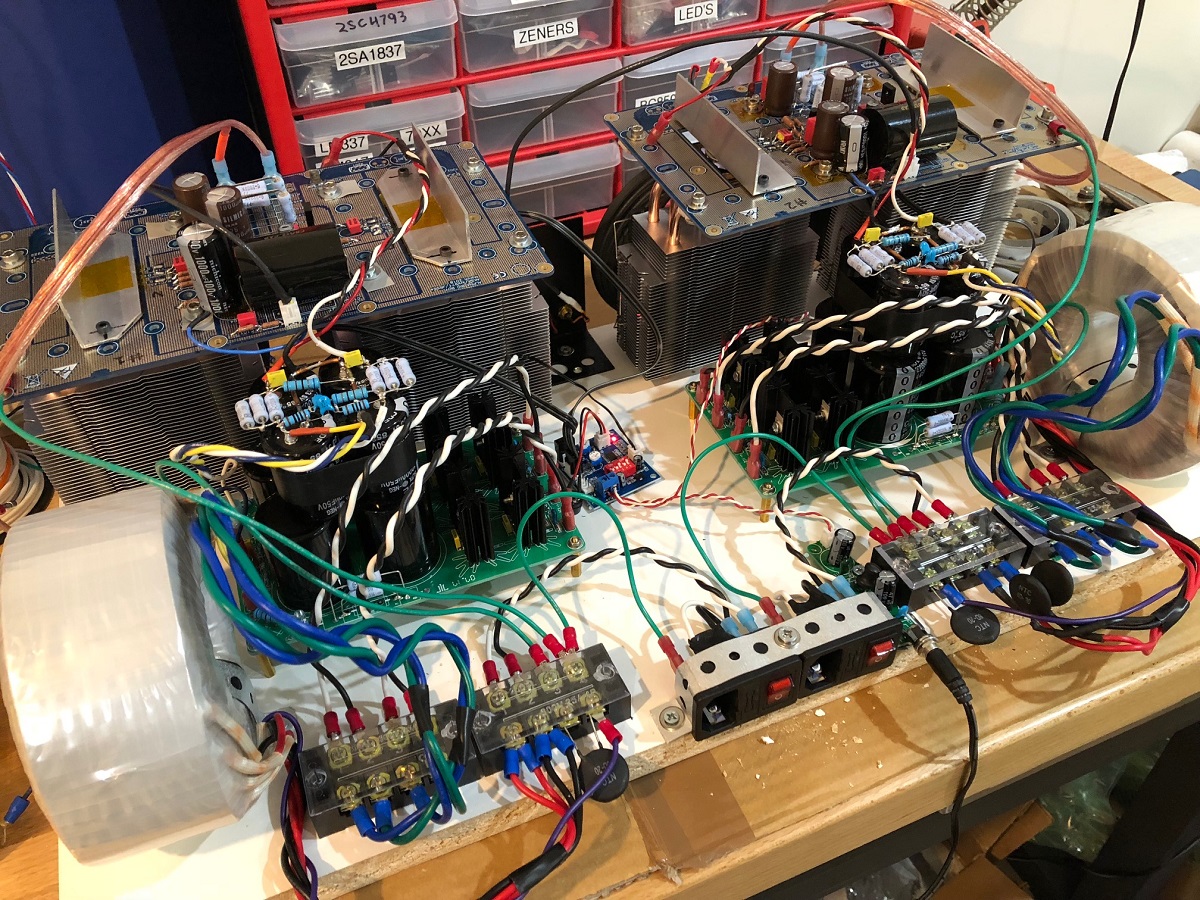
Top view:
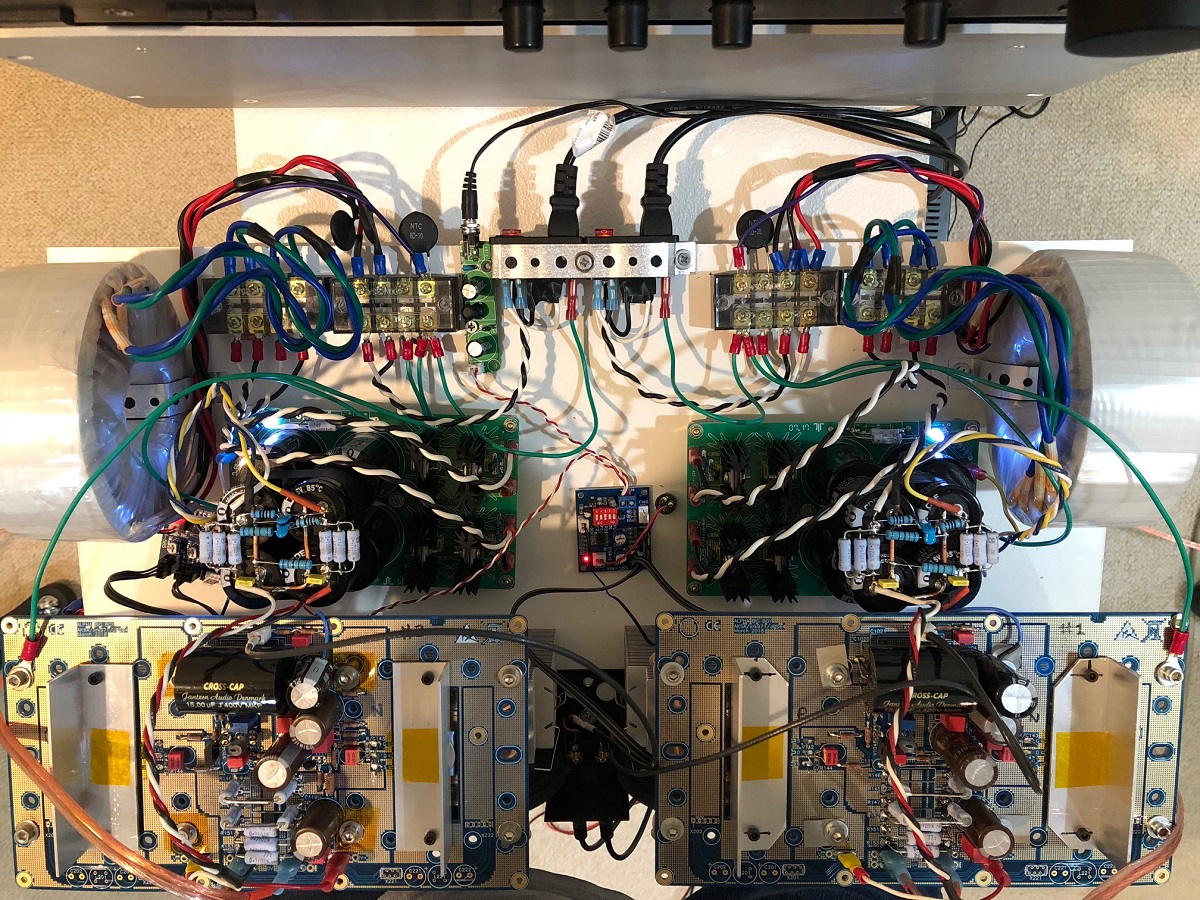
Deatail of PSU portion on left channel:
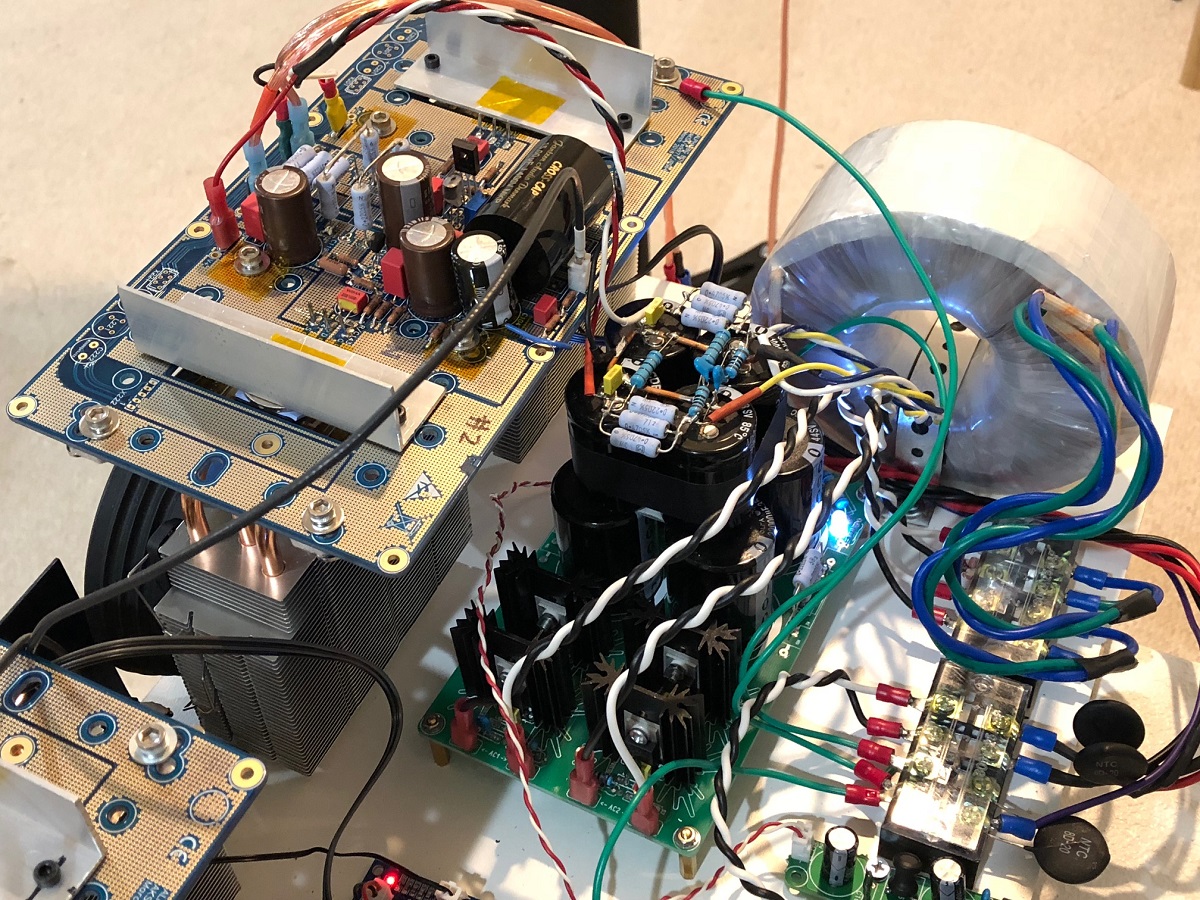
Front view:
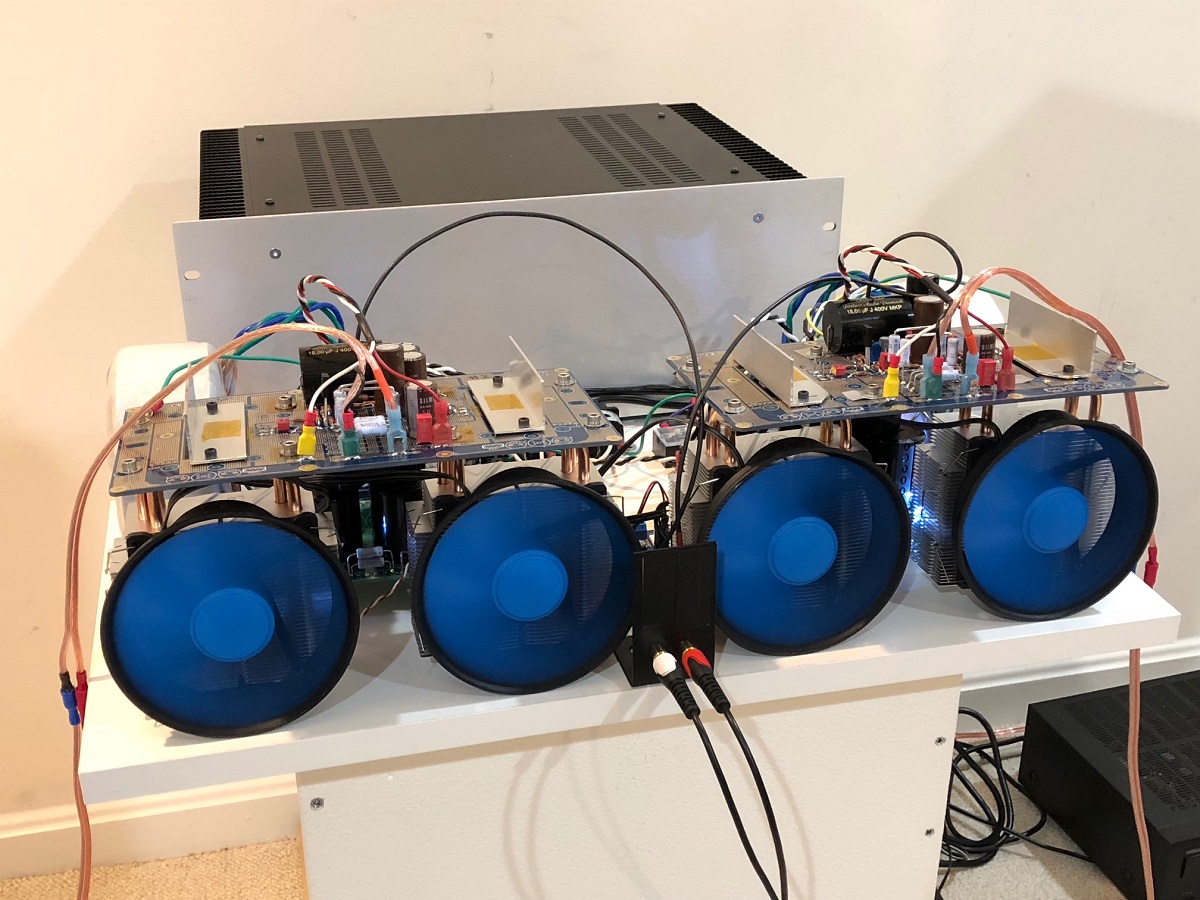
Amp in room with speakers, you can see the Alpha 20 in the 4U Disspante case behind it:
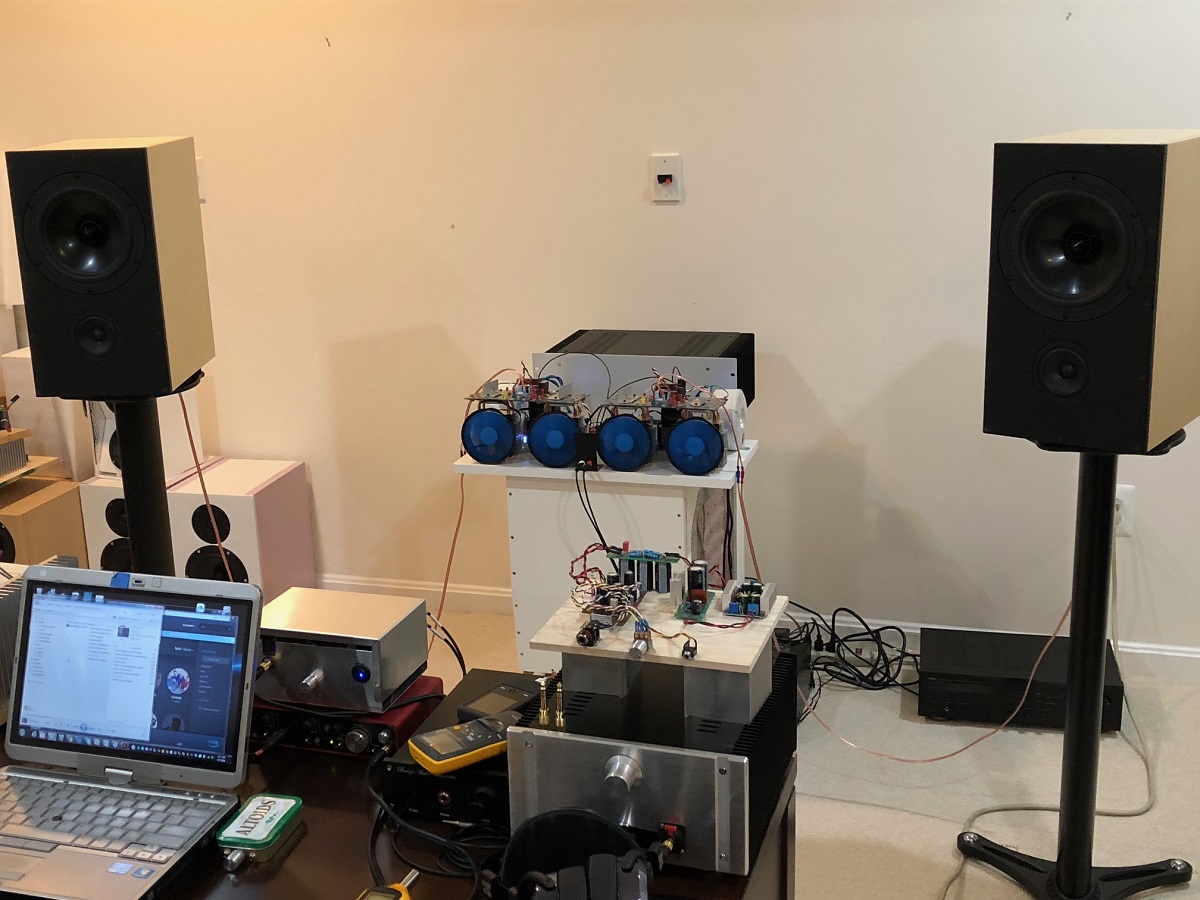
Well my hands and fingers are sore and calloused from what feels like prepping and making about 200 crimped wire connectors with 16awg wire in building the stereo ALPHA BB. I redid a lot of my wires to use good 16 gauge all the way from the IEC to the CRC. With proper chassis ground wires on the outer perimeter ground 'ring' of the BB PCB and a CL60 as a GLB between the earth ground and power ground. True dual monoblocks down to the the dual IEC wall cord jacks. The 12v fan PWM controllers share a common wall wart though.
For each channel, the power supply is a 400VA 25v Antek, feeding a Project16/Prasi CRC with Onsemi MUR880 diode bridges (dual) 22mF caps and 0.11R, this in turn feeds another CRC with 10mF caps and also 0.11R. All this gives me +/-28.8vdc at 3.05amp bias. DC offsets are 1mV on each side.
First test track was the Doors "Spanish Caravan", then Buddy Guy's "Five Long Years", next was Allison Krause "The Boy Who Wouldn't Hoe Corn", and then Pink Floyd's "The Great Gig in the Sky", recorded live in Australia with Ola Bieńkowska and Amy Smith on vocals. Finally, Daft Punk's "The Game of Love". This gave me a pretty good summary of the capability of this amp.
Truly sounds glorious in stereo. The spatial imaging is spot on and the soundstage is huge. With proper wiring it is dead quiet with ear pressed hard to speaker to hear any noise when no music playing. No hum or ground loop artifacts of any kind. The most amazing thing of all is the sheer power. Even at the derated 28.7v rails, this amp sounds like a 100w/ch Class AB, no sign of weakness or strain at crescendos and peak sounds, but with the supple fluidity and resolution of a fine Class A. I will listen more and report back later. No
Here are some photos.
My fingers ache looking at all the crimp joints. I think a power crimping tool would be very useful to have.
Top view:
Deatail of PSU portion on left channel:
Front view:
Amp in room with speakers, you can see the Alpha 20 in the 4U Disspante case behind it:
Attachments
Last edited:
Incredible. Looks like the electronics on the TGV. This is wonderful!!
Congratulations, X. You are incredible.......
Hugh
Congratulations, X. You are incredible.......
Hugh
That was a simulation with 1k signal and 15Vpeak, but with a 100Hz signal distortion went 15db up.Btw, original Alpha20 with higher bias (1.95A) is stable to 4ohms? Any idea to bias even higher, since my sinks are huge? How much power it delivers to 4ohm?
If you want 4R stability then it's the Alpha 4R that you need, that one delivers also low distortion at 100Hz with 15Vpeak
Wow X, great work, real dedication. So pleased the results were worth the effort, incredible.
I have still been delving into ways of keeping 20W Alpha cool. I am not in the position to purchase large heatsinks for passive cooling so I have been trying different solutions with parts I already have ( amassed over the years) as per my previous pictures. I think I now have a solution.
I had a 200mm length of 135mm aluminium box section that I lined on two internal sides with finned heatsink and then installed a Papst 120mm fan to one end. Results surprised me. The 12V fan running at only 3.8V and pretty much noiseless kept the sinks at a very low temperature,will try to measure exactly, but perhaps 15 degrees above ambient.
I may fit sinks to the other two internal surfaces. This gives a very compact solution to dissipate the heat and importantly to me seems virtually inaudible.
I will test further and if all good start building proper power supplies and case.
Regards
Alan
I have still been delving into ways of keeping 20W Alpha cool. I am not in the position to purchase large heatsinks for passive cooling so I have been trying different solutions with parts I already have ( amassed over the years) as per my previous pictures. I think I now have a solution.
I had a 200mm length of 135mm aluminium box section that I lined on two internal sides with finned heatsink and then installed a Papst 120mm fan to one end. Results surprised me. The 12V fan running at only 3.8V and pretty much noiseless kept the sinks at a very low temperature,will try to measure exactly, but perhaps 15 degrees above ambient.
I may fit sinks to the other two internal surfaces. This gives a very compact solution to dissipate the heat and importantly to me seems virtually inaudible.
I will test further and if all good start building proper power supplies and case.
Regards
Alan
Attachments
Alan,
When you are using passive cooling the fins should be vertical, separated by 10mm (no less), no more than 100mm tall for one heat source, and at least 175mm wide for one device. You should design for 30C days, although most of your year inside the temperature is typically about 22C. In Australia these figures are a little higher, and in summer one must design for 40C days, of which in Melbourne we would have five or six every year. Passive cooling is not efficient and slow.
However, when you start to blow air with a fan across the sink things change hugely, typically by three fold. With a 120Hx150W and with 18 50mm fins (7mm apart) and blowing air at around 25cfm, this heatsink will dissipate 5 large IRF240s across the width running a total of 175W heat with temperature rise over ambient of 27C. This is 0.155C/watt, a very efficient heatsink, demonstrating so clearly why auto radiators are fitted with fans.
Your approach would be more efficient if you had two small conventional heatsinks, with each channel on each flat side, with the fins pointing inwards. Then you have a laminar flow through all the fins, forming a tunnel. Have a look at a pro-audio cooling tunnel; this is the system that works very, very efficiently.
Your system will work but the heat has to move into the central finned area, which I think is a different piece of Al, not the same metal you are mounting the mosfets? You have a high thermal resistance from the outer Al to the inner finned area; not so effective.
Hugh
When you are using passive cooling the fins should be vertical, separated by 10mm (no less), no more than 100mm tall for one heat source, and at least 175mm wide for one device. You should design for 30C days, although most of your year inside the temperature is typically about 22C. In Australia these figures are a little higher, and in summer one must design for 40C days, of which in Melbourne we would have five or six every year. Passive cooling is not efficient and slow.
However, when you start to blow air with a fan across the sink things change hugely, typically by three fold. With a 120Hx150W and with 18 50mm fins (7mm apart) and blowing air at around 25cfm, this heatsink will dissipate 5 large IRF240s across the width running a total of 175W heat with temperature rise over ambient of 27C. This is 0.155C/watt, a very efficient heatsink, demonstrating so clearly why auto radiators are fitted with fans.
Your approach would be more efficient if you had two small conventional heatsinks, with each channel on each flat side, with the fins pointing inwards. Then you have a laminar flow through all the fins, forming a tunnel. Have a look at a pro-audio cooling tunnel; this is the system that works very, very efficiently.
Your system will work but the heat has to move into the central finned area, which I think is a different piece of Al, not the same metal you are mounting the mosfets? You have a high thermal resistance from the outer Al to the inner finned area; not so effective.
Hugh
Thanks Hugh. I constructed the tunnel to investigate how effective it would be. I already had it in my mind to cut "windows" in the box section so the output devices could be secured to the internal heat sink, doing away with an extra thermal junction.
I will cut some normal heatsink to enable me to mount inside the box section as you describe. I am quite heartened by the results so far, so an improvement would be really great.
Thanks for your comments, all of which are greatfully received .
Regards
Alan
I will cut some normal heatsink to enable me to mount inside the box section as you describe. I am quite heartened by the results so far, so an improvement would be really great.
Thanks for your comments, all of which are greatfully received .
Regards
Alan
Hi Alan,
Nice construction that you made !
Fischer has such cooling tunnels, here's their productpage for some ideas.
It seems the closer the fins in the tunnels the better the cooling, but I suppose also more noise.
They have also such heatsinks for making your own tunnels.
Regards,
Danny
Nice construction that you made !
Fischer has such cooling tunnels, here's their productpage for some ideas.
It seems the closer the fins in the tunnels the better the cooling, but I suppose also more noise.
They have also such heatsinks for making your own tunnels.
Regards,
Danny
Thanks Danny for the heads up, plus the additional work you have done is outstanding.
Regards
Alan
Regards
Alan
X,
I really like your music choices. Can’t wait to start the build.
Brad
Thanks. I borrow playlists from others often - that’s the only way to try new songs. It goes without saying that I will listen to a jazz trio with bass, drums, piano. But good clean heavy metal is also excellent. AC/DC “Back in Black” is one. Metallica’s Ride the Lightning album has several good ones. And of course, anything by Norah Jones - but she sounds good on almost any setup. 🙂
I got Gig in the sky idea from DrPro.
What are some of your favorite tracks?
Great idea Alibear!
If it keeps it cool, then that’s fine. Just add a mechanical bimetallic switch failsafe on the sink body. 75C is a good cutoff - just two spades with the mains AC.
You may find a tunnel is not needed. It helps but placing a fan against some fins works wonders too. I do that for my ACA.
WTL,
Congratulations on getting your A20 together!!
Is that a couple of Conrad heatsinks, maybe 300x100, MF30-100?
How do they do with the heat/temperature? I notice your two outputs are within 100mm of each other.
HD
Congratulations on getting your A20 together!!
Is that a couple of Conrad heatsinks, maybe 300x100, MF30-100?
How do they do with the heat/temperature? I notice your two outputs are within 100mm of each other.
HD
- Home
- Amplifiers
- Solid State
- Aksa Lender P-MOS Hybrid Aleph (ALPHA) Amplifier
